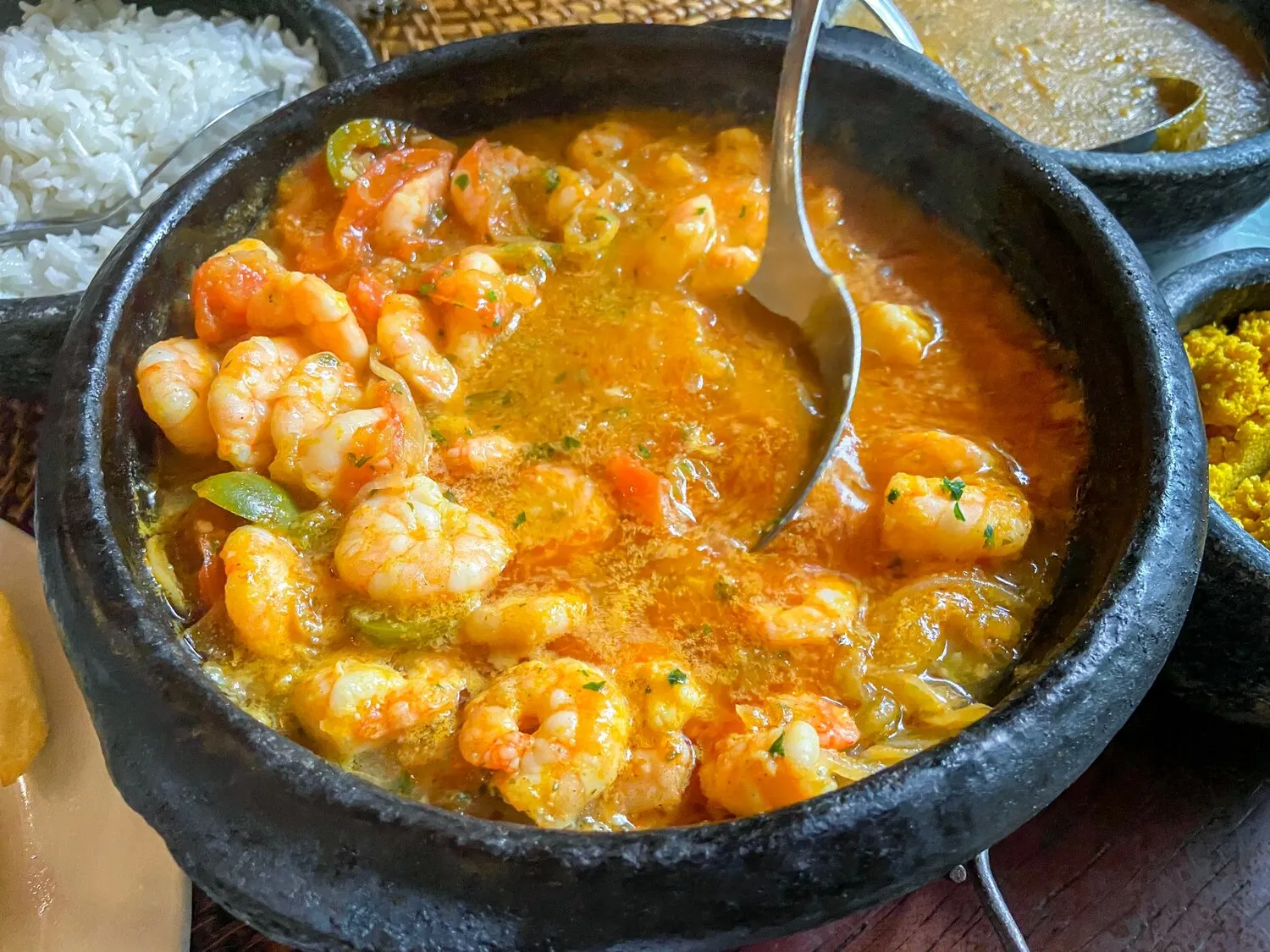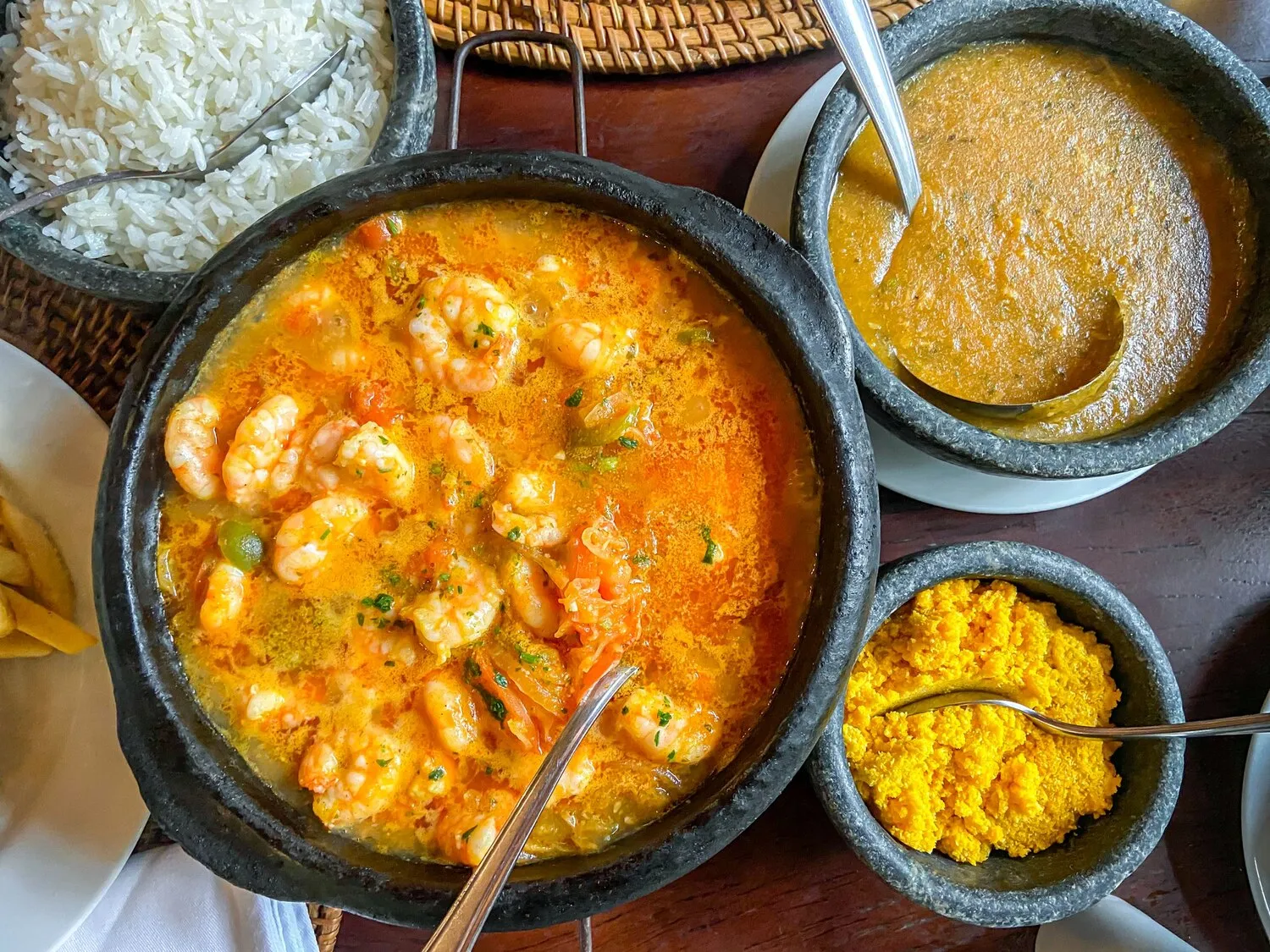
Moqueca de Camarão
Shrimp stew cooked in coconut milk, palm oil, tomatoes, onions, and cilantro. A traditional Bahian dish.
Nutrition Facts
* The % Daily Value (DV) tells you how much a nutrient in a serving of food contributes to a daily diet. 2,000 calories a day is used for general nutrition advice.
Moqueca's history is deeply intertwined with the indigenous peoples of Brazil, who originally cooked fish in clay pots with leaves. African influences were later incorporated with the arrival of enslaved people, contributing ingredients like coconut milk and palm oil (dendê oil). Over time, the dish evolved, particularly in the coastal state of Bahia, becoming a symbol of Afro-Brazilian cuisine.
Moqueca is more than just a dish; it's a cultural icon, especially in Bahia. It represents the fusion of indigenous, African, and Portuguese culinary traditions and is often associated with celebrations, family gatherings, and coastal lifestyle.
Bahian Identity
Moqueca is deeply embedded in Bahian identity, reflecting the region's rich cultural heritage and Afro-Brazilian influences. It's a dish that embodies the spirit of Bahia.
Social Gatherings
Moqueca is often prepared and enjoyed during social gatherings and family celebrations. It's a dish meant to be shared and enjoyed communally.
Coastal Lifestyle
As a seafood stew, Moqueca is strongly associated with Brazil's coastal regions, particularly Bahia. It represents the connection to the sea and the abundance of fresh seafood available.
Moqueca de Camarão is a vibrant and flavorful stew defined by the sweetness of coconut milk, the unique taste of palm oil, the acidity of tomatoes, and the aromatics of onions, garlic, and cilantro. The shrimp provides a delicate seafood flavor, enhanced by the rich sauce.
The flavor profile is complex, offering a balance of sweet, savory, and slightly spicy notes. The coconut milk adds a creamy texture and subtle sweetness, while dendê oil contributes a distinct earthy and slightly smoky flavor and a vibrant orange color. Tomatoes provide acidity that cuts through the richness, while onions and garlic create a savory base. Cilantro adds a fresh, herbaceous element, completing the harmonious blend.
Fresh Ingredients
Use the freshest shrimp and vegetables possible for the best flavor. Fresh cilantro is essential for the aromatic quality of the dish.
Dendê Oil Quality
The quality of the dendê oil greatly impacts the flavor. Look for authentic, high-quality palm oil, as some versions can be overly strong or bitter.
Gentle Cooking
Cook the Moqueca gently over low heat to prevent the shrimp from becoming rubbery. Avoid boiling the stew vigorously.
Clay Pot (Optional)
While not essential, cooking Moqueca in a traditional clay pot (panela de barro) can enhance the flavor and authenticity of the dish.
Explore additional Stew dishes and restaurants
Explore StewDiscover top dining spots and culinary experiences in Feira de Santana.
Explore Feira de SantanaLearn more about the food culture, restaurant scene, and culinary heritage of Brazil.
Explore Brazil
